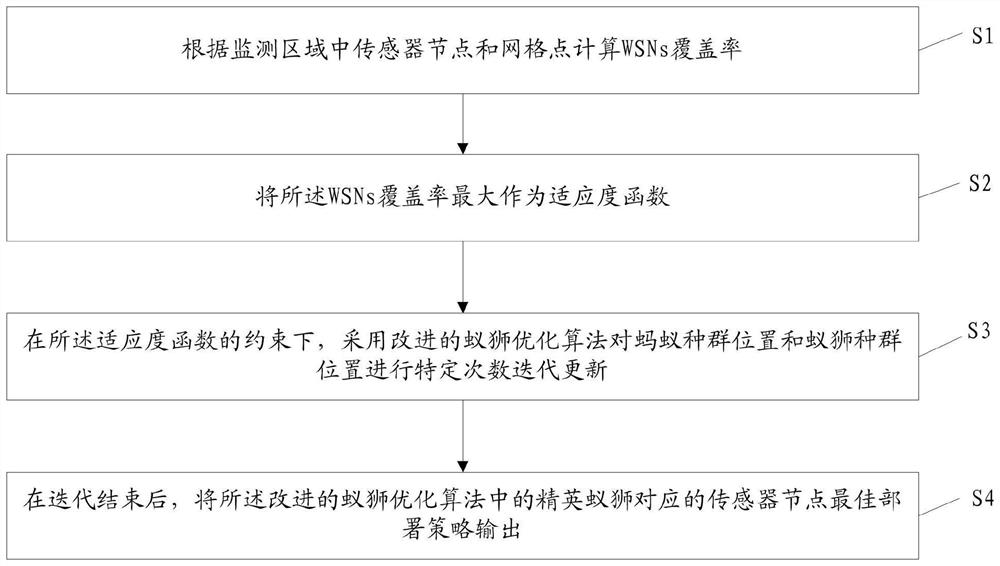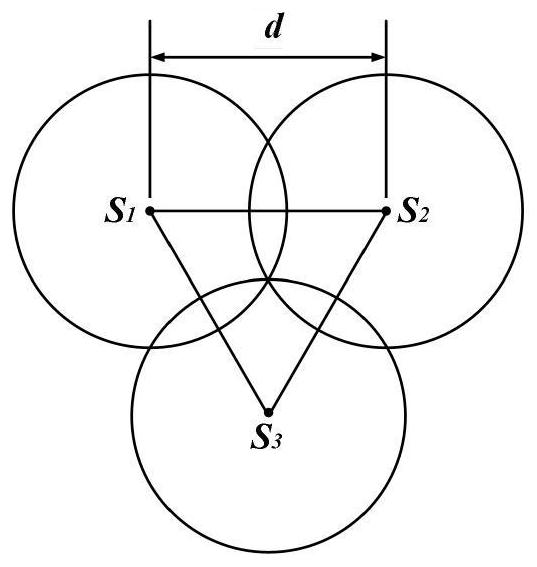WSNs coverage enhancement method and system
A technology of coverage enhancement and coverage rate, applied in the field of WSNs coverage enhancement method and system, to achieve the effect of maximizing deployment, avoiding a large amount of redundancy, and reducing deployment costs and energy consumption
- Summary
- Abstract
- Description
- Claims
- Application Information
AI Technical Summary
Problems solved by technology
Method used
Image
Examples
Embodiment 1
[0067] Coverage control and node deployment are one of the key issues of WSNs, which determine the perception ability of sensor nodes to the surrounding environment and are important indicators to measure the quality of service (QoS) of the network. Since the sensing nodes are generally randomly deployed in the monitoring area, it is easy to cause uneven distribution of nodes and lead to problems such as coverage holes, which in turn affects the quality of service of the network. Therefore, how to achieve a balanced distribution of network resources through reasonable deployment of nodes, thereby improving the service quality of network perception, collection, processing, and communication, is one of the difficulties studied by scholars at home and abroad. The problem of coverage control and node deployment of WSNs is essentially to use as few nodes as possible to maximize the deployment of the sensing coverage and communication coverage of the designated monitoring area.
[0...
Embodiment 2
[0197]The virtual force-guided particle swarm optimization algorithm in Example 1 also has the following disadvantages: in WSNs, the energy consumption of sensor nodes moving is far greater than the energy consumption of perception and communication, and the energy consumption of moving nodes is mainly determined by the moving distance, while The algorithm does not consider the problem of moving distance in the process of secondary deployment.
[0198] And when the antlion optimization algorithm is used to enhance the coverage performance of WSNs, the coverage value is optimized by updating the position of the elite antlion. In the original antlion optimization algorithm, ants search for food by randomly walking around antlions and elite antlions, and antlions update their positions by capturing ants, so the antlion's position update process is also random. This way of randomly updating the location will cause the sensor nodes to move too far during the second deployment, resu...
Embodiment 3
[0210] refer to Figure 9 , the present invention also provides a WSNs coverage enhancement system, comprising:
[0211] The coverage calculation module M1 is used to calculate the coverage of WSNs according to the sensor nodes and grid points in the monitoring area;
[0212] The fitness function determination module M2 is used to use the maximum coverage of the WSNs as the fitness function;
[0213] The position updating module M3 is used for under the restriction of described fitness function, adopts improved antlion optimization algorithm to carry out specific number of iterative updates to ant population position and antlion population position;
[0214] The output module M4 is configured to output the optimal deployment strategy of sensor nodes corresponding to the elite antlions in the improved antlion optimization algorithm after the iteration ends.
PUM
 Login to View More
Login to View More Abstract
Description
Claims
Application Information
 Login to View More
Login to View More - R&D
- Intellectual Property
- Life Sciences
- Materials
- Tech Scout
- Unparalleled Data Quality
- Higher Quality Content
- 60% Fewer Hallucinations
Browse by: Latest US Patents, China's latest patents, Technical Efficacy Thesaurus, Application Domain, Technology Topic, Popular Technical Reports.
© 2025 PatSnap. All rights reserved.Legal|Privacy policy|Modern Slavery Act Transparency Statement|Sitemap|About US| Contact US: help@patsnap.com



